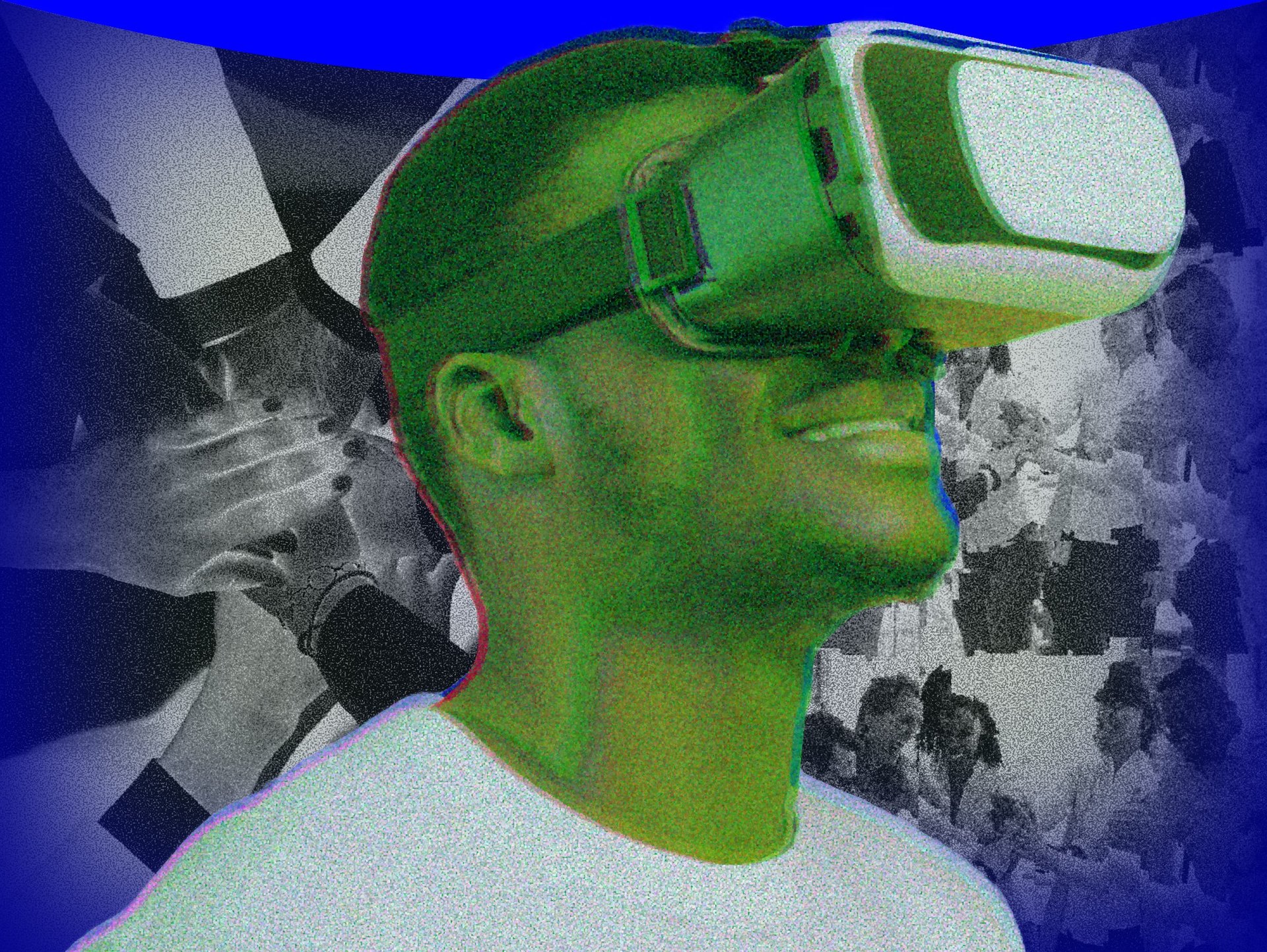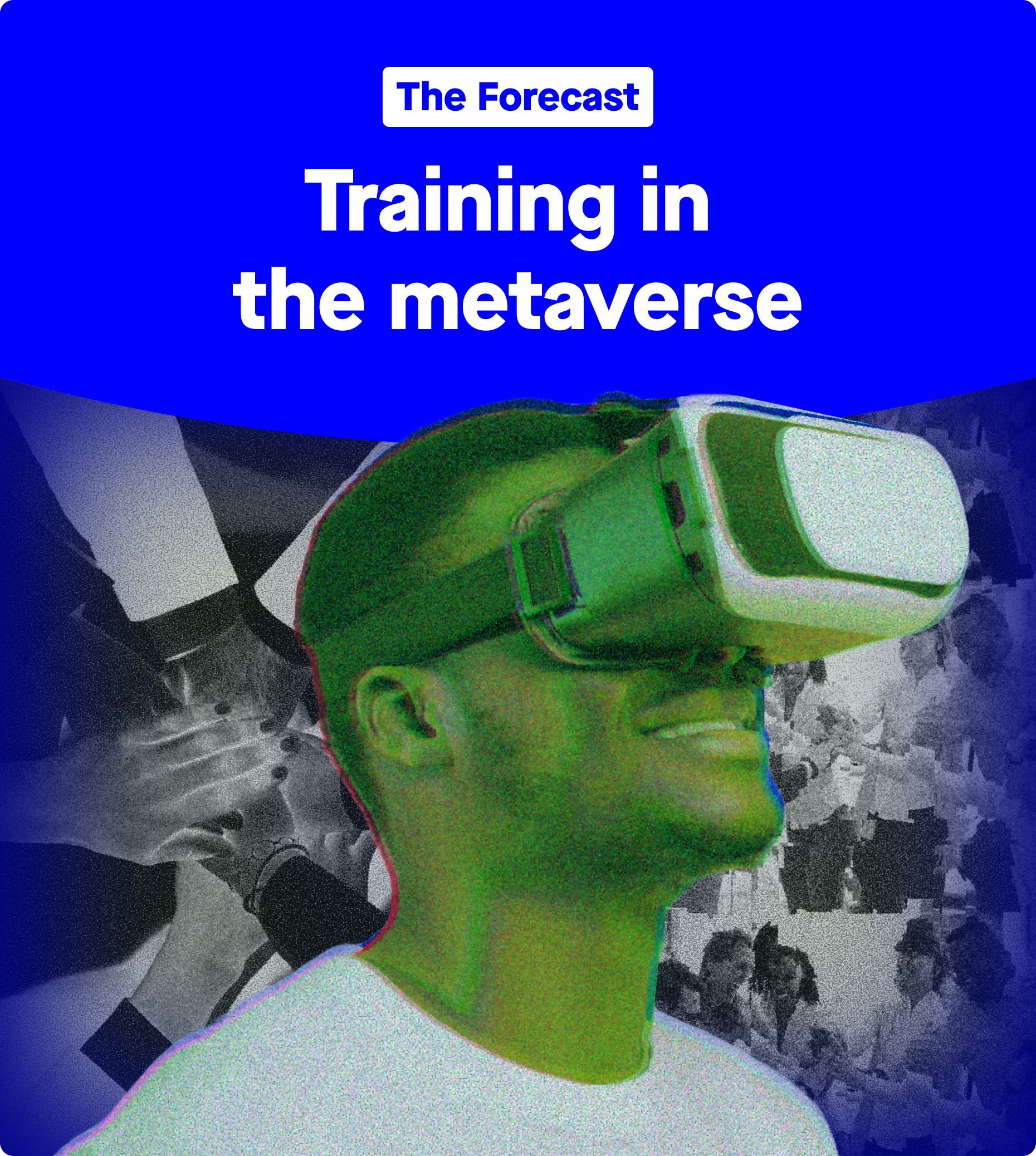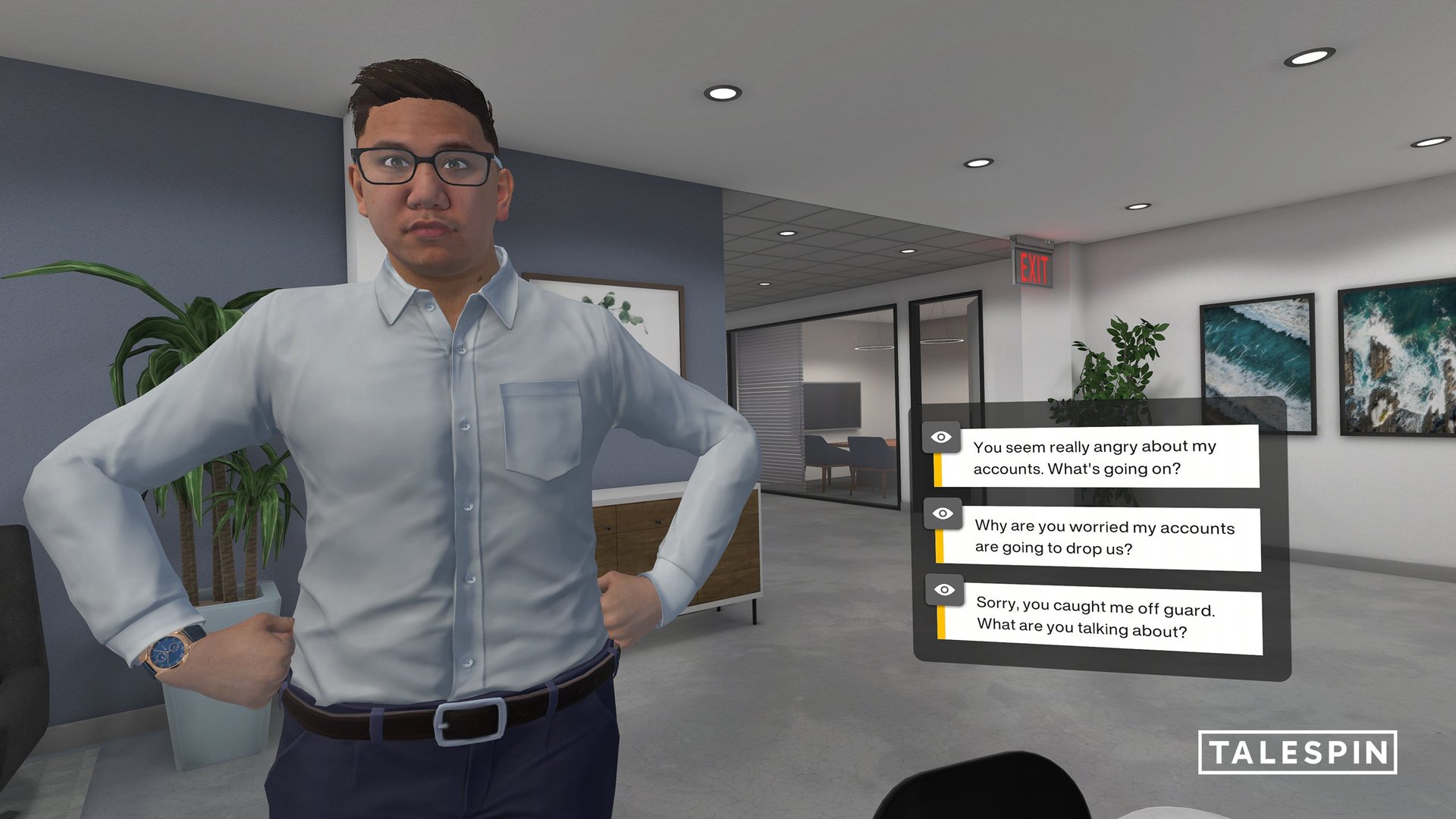✦ Training in the metaverse
Hi Quartz members,



Hi Quartz members,
In 1929, American inventor Edwin Link created the first flight simulator designed to teach pilots how to fly with instruments rather than visual cues. His work was not immediately recognized as revolutionary. It became a theme park ride and only later did the military recognize its usefulness.
Now Link’s simulator is cited as a pioneering immersive training tool, the forerunner to today’s virtual reality training industry. Today, people can don VR goggles and hand controls (or haptic gloves) to learn their way around a hotel kitchen, or an appendectomy, or to practice field visits as an insurance agent or social worker.
Although the uninitiated may still be apt to write off the metaverse as a toy for gamers (echoing the initial reaction to Link’s contraption), virtual skill-building has quietly become a multi-billion dollar business.
In the last few years, virtual—or metaverse-based—training has also entered a new, potentially treacherous terrain: the realm of workplace psychology. Immersive experiences are ready to replace awkward and outdated training videos for managers learning how to give good feedback, resolve conflicts, recognize bias, and coach employees of all dispositions: the cantankerous, the smarmy, the avoidant, the shy. Ultimately, VR will help workers become better active listeners and more empathic managers, Stephen Fromkin, chief content officer and cofounder of Talespin, predicts. But do we want to learn how to be more emotionally intelligent humans from avatars and code?
The backstory
You’ve probably noticed that buzz about the metaverse—a space (or many spaces) where people can meet, shop, work, and study in virtual reality—has faded recently. When “Facebook” became “Meta” last fall, other brands got excited and started to plot their own metaverse debuts. Now, tech pundits question whether the metaverse is dead on arrival. (Probably not.)
For companies that make VR-for-workplace training applications, however, the rise and fall of metaverse hype is almost irrelevant. The demand for virtual training software was strong even before the pandemic, when companies saw the potential for VR to make job training accessible to workers at scale, and to train and onboard job candidates quickly.
When the pandemic arrived, the case for virtual skill-building became crystal clear. It was no longer possible to squeeze workers into a test kitchen or a boardroom. “VR was beginning to catch on before covid-19, but the global pandemic and the push to remote work is fast-tracking the need for such tools,” Jeremy Bailenson, founding director of Stanford’s Virtual Human Interaction Lab and co-founder of the VR training company Strivr, wrote in a story for Harvard Business Review in 2020. “VR is the perfect medium for this moment.”
Accenture felt the same way. Last year, the multinational consultancy purchased 60,000 Oculus headsets to send them out to new hires who would be onboarded (at least partially) in the company’s metaverse, the nth floor.
Why VR?
Here’s what VR software designers see as some of the benefits of immersive, virtual training:
- It’s less embarrassing. Users like experimenting in the privacy of their own home. For a course on giving feedback, for example, a trainee might roleplay conversations with a virtual human, without an audience, and replay the same lesson as many times as necessary.
- It’s cheaper and more convenient. Although companies have to pay for the software and headsets, they do not have to pay for the airfare or real estate required for in-person training.
- Employees take less time to learn, and they retain more.
But VR training is imperfect:
- It can’t tackle sensitive, high-stakes situations. For example, police organizations are using virtual training to teach officers about responding to domestic violence. But critics charge that adopting a new technology won’t solve the problem of over-policing and that VR narratives could be tainted by bias.
- It’s not the only virtual option. At least one meta-analysis has found that VR is not more effective than video-based lessons.
- It can make you dizzy. Thanks to bulky headsets and software that may make you woozy or give you headaches, the metaverse is not a comfortable place to be for long stretches of time.
The players
These are some of the top US-based companies making VR training software.
- Strivr: Cofounded by Stanford’s Jeremy Bailenson, Strivr counts Walmart and Verizon among its customers.
- Talespin: Its latest no-code VR training suite, Co-pilot, lets a customer like Accenture build customized VR sessions for itself and its clients.
- SweetRush: SweetRush’s VR training for Hilton employees was featured in an Oculus for Business promo video.
- Transfr: The New York-based company creates simulated environments where college and high school students can study a trade.
- Mursion: Mursion’s VR, which is devoted to building emotional intelligence, was first developed with teachers in mind, at the University of Central Florida.
What’s bothering Angelo?

Metaverse training for “soft skills” can be powerful when software designers make the most of VR’s sense of presence. For example, in this Talespin module, one lesson places the user in an employee common room where an enraged colleague, Angelo, bursts in to complain about how a project is being handled. Angelo hovers above the user, eliciting the same visceral response that might arise during actual office drama. Now the user has to decide how best to respond—choosing from three possible scripts—while experiencing the intensity of the moment.
🔮 Predictions
- “We’re seeing increased demand for multi-user sessions where learners talk, interact, and brainstorm together in simulated environments. It’s a good training approach for any kind of project where people have to think or visualize together in the same room, either in small or large groups.” —Scott Likens, PwC, emerging technology leader, in HR Today.
- “It’s intended to not just train and practice in a safe space, but then be able to collaborate with others, be able to have conversations, peer conversations, mentor conversations. It’s not just this one piece of content, or these small groupings of content that are very effective. Whether it’s AR or VR or something else, being able to access a digital layer within the real world offers a lot of opportunity toward learning and being productive. That’s where our platform is going.” —Stephen Fromkin, chief content officer and cofounder of Talespin
Keep learning
Barry sobbed as he begged for his job. I canned him anyway, over and over (Los Angeles Times)
Is VR the future of corporate training? (Harvard Business Review)
Sound off
How would you like to train for your next job?
In last week’s poll about the future of gene editing, 69% of respondents said they were most excited about new medical treatments. We don’t blame you, there’s exciting stuff to come.
Have a great week ahead,
—Lila MacLellan, Quartz senior reporter (unfailingly polite to virtual beings)
One 🤖 thing
Job simulator training programs are slightly gamified, but job simulation is also a wildly popular gaming genre. A whole crop of intentionally mind-numbing games allow users to become a virtual farmer or to drive a virtual truck across Europe. They are “transcendally boring,” writes the Guardian’s Keith Stuart, and that’s a selling point. “In an unpredictable world, it is calming to open the doors of a bus at the right time, to give the correct change, to set the heating system correctly, to obey the traffic signs.”